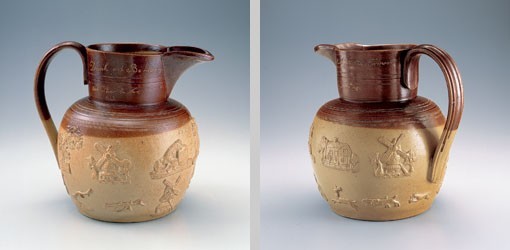
Jug, John Bacon, Bradley, Staffordshire, 1842. Brown salt-glazed stoneware. H. 10 1/2". Capacity: 2 gallons. (Unless otherwise noted, all objects courtesy of the author’s collection; photos, Gavin Ashworth.)
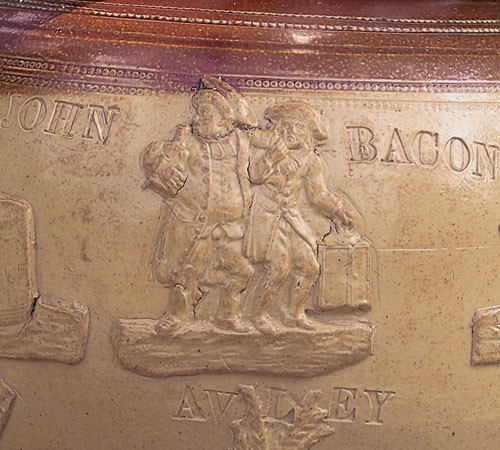
Detail of the type-impressed “JOHN BACON” on the jug illustrated in fig. 1.

Detail of the inscriptions on the neck of the jug illustrated in fig. 1. Left: “Drink and Be merry / And Never be Sad / 1842.” Right: “Good luck to the Farmer /Augst 20th 18...2” [the third digit has been reinscribed, possibly a 5 overwritten by a 6].
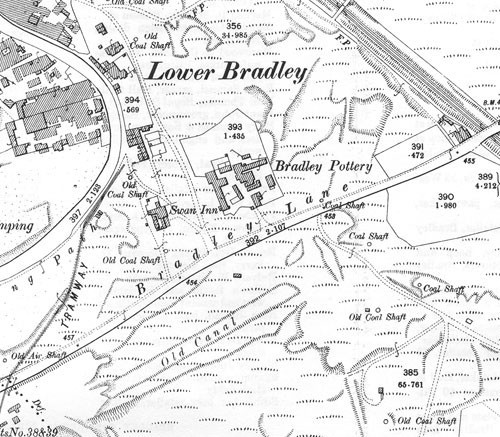
Survey map showing the Bradley Pottery in Lower Bradley. (Staffordshire Sheet 67.04, “Bradley, Coseley & Wednesbry Oak 1901,” repr. Alan Godfrey Maps, courtesy of The Trustees of the National Library of Scotland.)
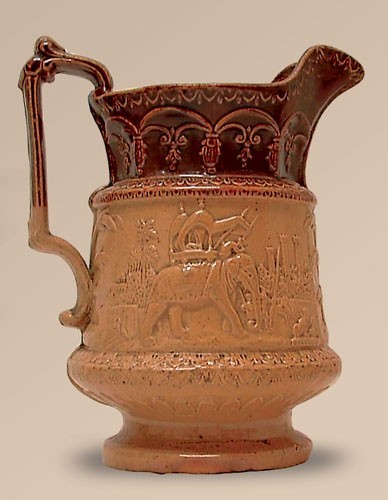
Jug, ca. 1845–1850. Stoneware. H. 7". Impressed on the base of this molded brown stoneware jug with oriental motifs is “R * BREW / BILSTON.” (Courtesy, Wolverhampton Art Gallery and Museum.)
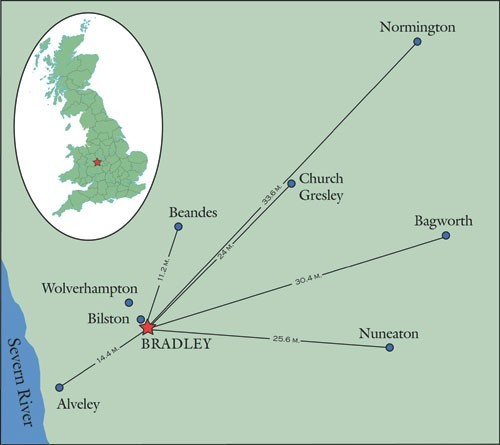
Diagram showing the relative distances between Bradley and other towns that are associated with John Bacon’s life and known products. (Diagram by Jamie May.)
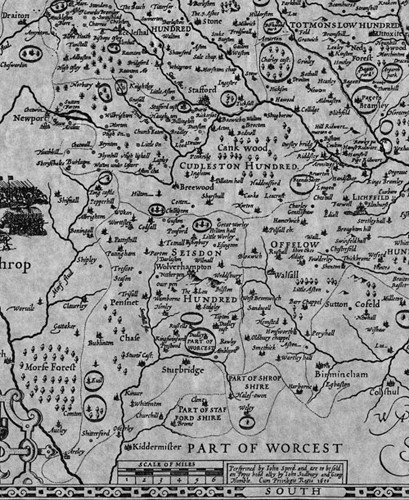
Detail from John Speed’s 1610 map of Staffordshire and the surrounding area, showing the locations of Avley (Alveley), Bilston, and Beandes (Beaudesert).
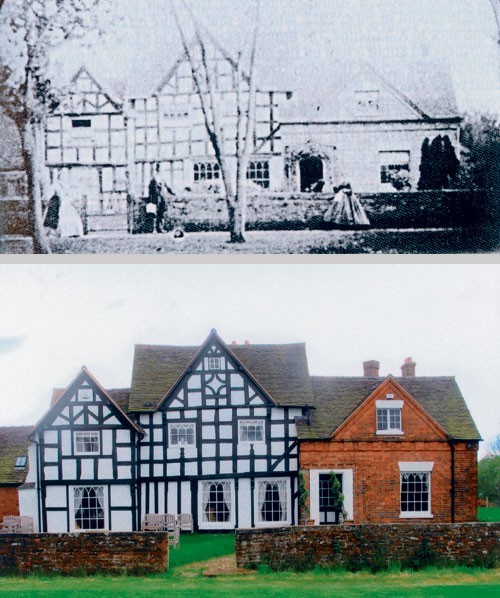
Photographs of Hall Close. Top: Ca. 1850.Bottom: 2005. (Photo, Ivor Noël Hume.)

Details of sprigs on the jug illustrated in fig. 1. Left: Toby at his table. Center: Sleeping toper. Right: “The Vicar and Moses.”
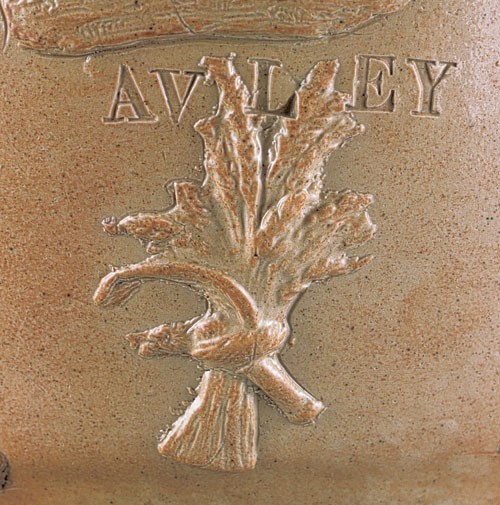
Detail of wheat sheaf and sickle sprig on the jug illustrated in fig. 1.
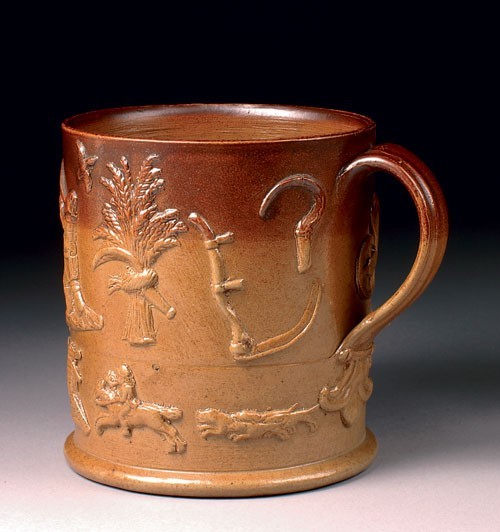
Mug, 1849. Stoneware. H. 5 3/4". This brown stoneware mug bears the inscription “Mr. Cockayne / Gamekeeper / Beandes / Augt 13th / 1849.” (Courtesy, Ashmolean Museum.)
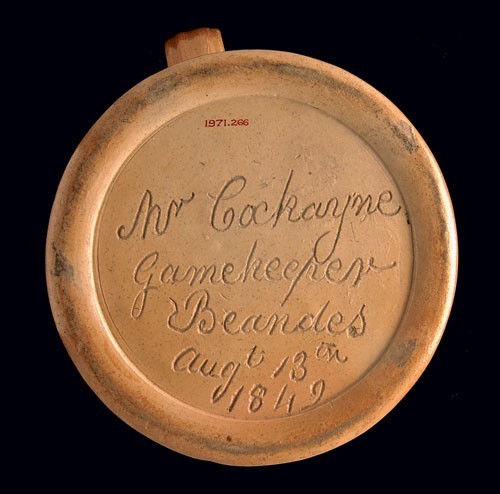
Left: Detail of the handwritten inscription on the mug illustrated in fig. 11. Right: Detail of the handwritten inscription on the jug illustrated in fig. 1: “1842 / A present / From John Bacon / Potter Bradley / Nr Bilston / Stafordordshire.”
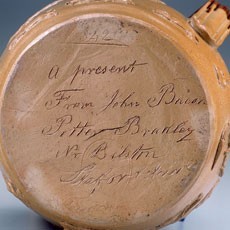
Left: Detail of the handwritten inscription on the mug illustrated in fig. 11. Right: Detail of the handwritten inscription on the jug illustrated in fig. 1: “1842 / A present / From John Bacon / Potter Bradley / Nr Bilston / Stafordordshire.”
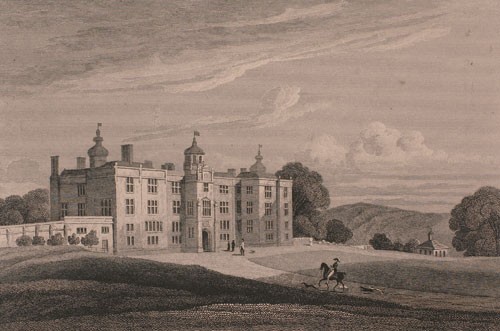
Engraving of Beaudesert Park, Staffordshire, nineteenth century. (Courtesy, Ashmolean Museum, Oxford.)
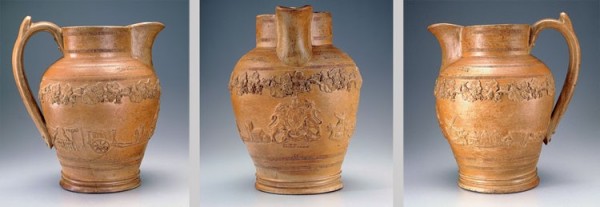
Jug, John Bacon, Bradley Pottery, Staffordshire, 1849. Brown salt-glazed stoneware H. 15 5/8". Type-impressed on one shoulder: “MRS : ROBERTS”; on the other shoulder: “BARREL INN”; on the front: “BAGWORTH / 1849.”
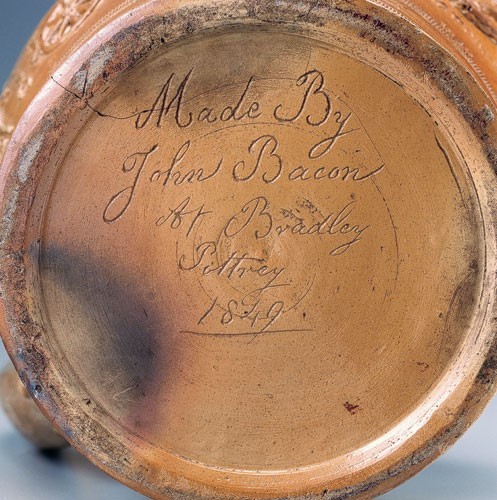
Detail of the inscription on the base of the jug illustrated in fig. 14. Incised in script: “Made By John Bacon / at Bradley Pottrey / 1849.”
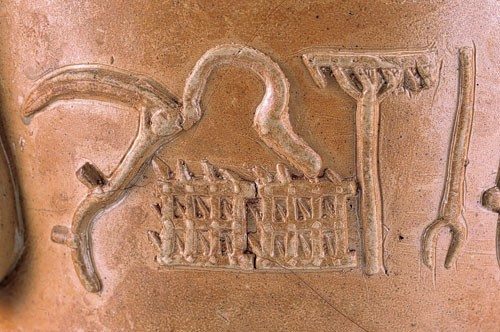
Detail of the jug illustrated in fig. 14 showing sprig-applied farm implements—scythe, sickle, double harrow, rake, and hay fork.
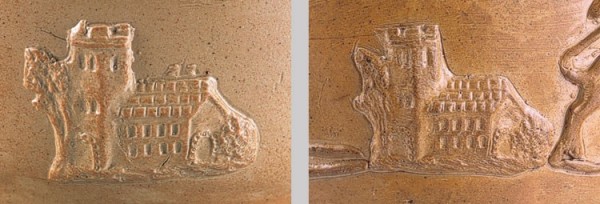
Detail of sprigs on the jugs illustrated in figs. 1 (1842) and 14 (1849). Left: Church with birds on its roof from fig. 1. Right: Church similar in design but lacking birds from fig. 14.

Detail of sprigs on the jugs illustrated in figs. 1 (1842) and 14 (1849). Left: Plow with broken wheel from fig. 1. Center: Spade and plow with intact wheel from fig. 11. Right: Plow and barrow details from fig. 14. (Courtesy, Ashmolean Museum.)
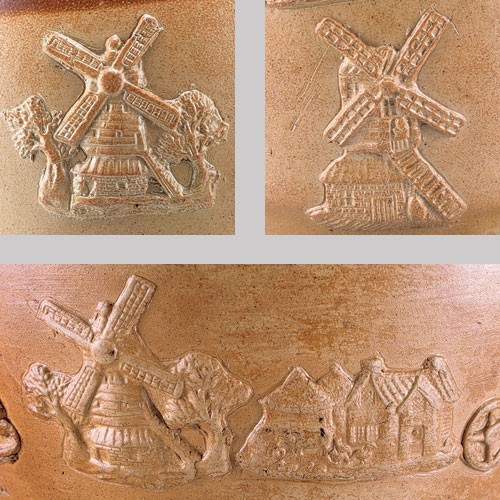
Detail of sprigs on the jugs illustrated in figs. 1 (1842) and 14 (1849). Left: Windmill from fig. 1. Right: Windmill from fig. 14. Below: Another windmill from fig. 14 alongside a farm complex.

Detail of sprigs on the jug illustrated in fig. 14 showing a wheelbarrow (left) and a farm cart (right).
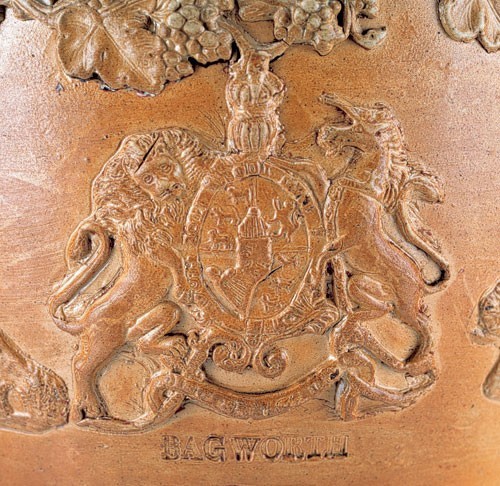
Detail of a sprig on the jug illustrated in fig. 14 showing a version of the British royal arms with a shell substituting for the cap of Hanover. Note the off-center treatment of the scroll below the garter.
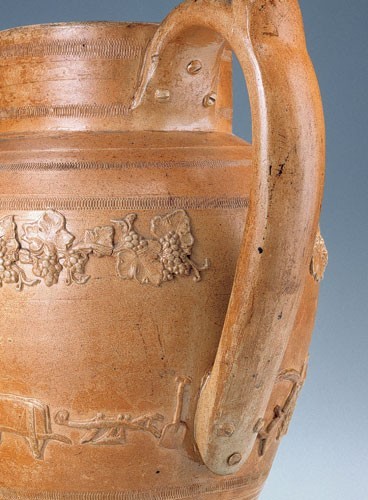
Detail of the handle on the jud illustrated in fig. 14 featuring triple faux at the top and at the bottom.

Mug, possibly John Bacon, Bradley, Staffordshire, ca. 1840s. Brown salt-glazed stoneware. H. 5 1/2". (Photo, Lance Mytton.) This updated, uninscribed mug displays sprigs paralleling those on the jugs illustrated in figs. 1 and 14.
